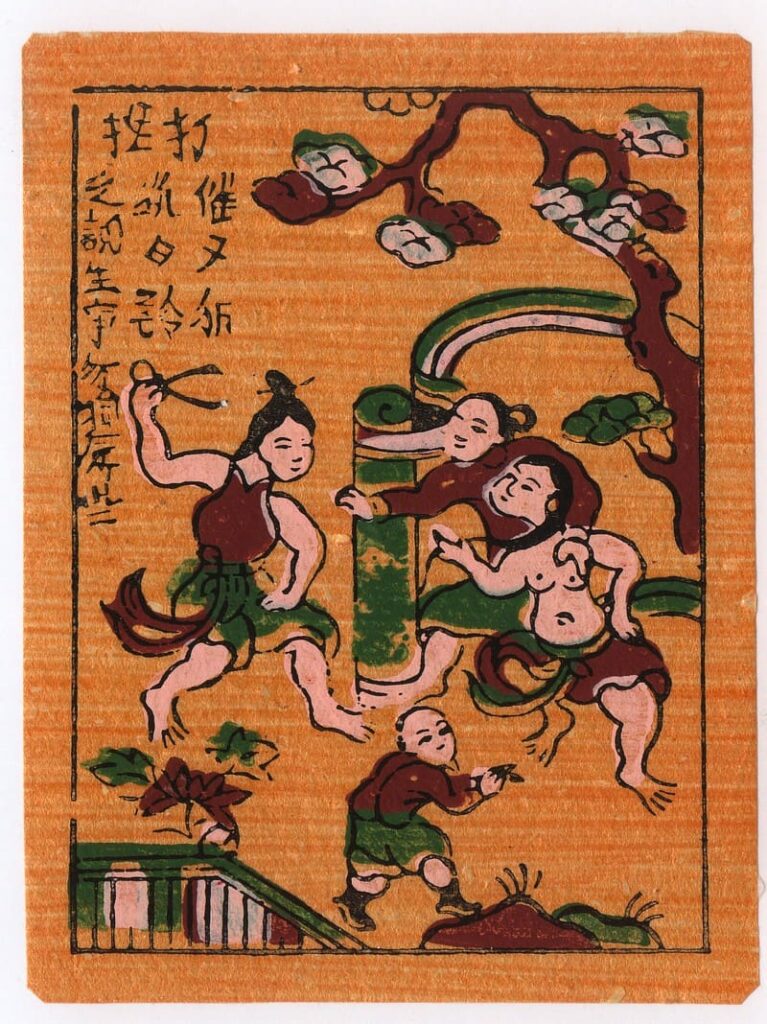The folk painting of jealousy – a satirical masterpiece of society from Dong Ho village – has existed for hundreds of years, reflecting family tragedies that are still painful today. If you are looking for information about the origin, composition or profound meaning of this Vietnamese painting, this article will help you explore the details, from the rustic drawing to the message criticizing polygamy. Let’s find out why this painting is still an immortal cultural symbol, bringing educational value to the younger generation.
Dong Ho Painting of Jealousy – Symbol of Vietnamese Folk Art
The folk painting of jealousy belongs to the Dong Ho painting line, a famous traditional art form of Vietnam. Born in Dong Ho village, Thuan Thanh district, Bac Ninh province, this line of paintings uses Do paper and natural colors from herbs, creating rustic but vibrant paintings.
What is Dong Ho Painting and Why is it Important in Folk Culture?
Dong Ho paintings are not only images but also stories of life. Hand-painted with black from bamboo charcoal, red from young bricks, green from indigo leaves and yellow from sophora flowers, they reflect the daily life, customs and moral values of ancient Vietnamese people.
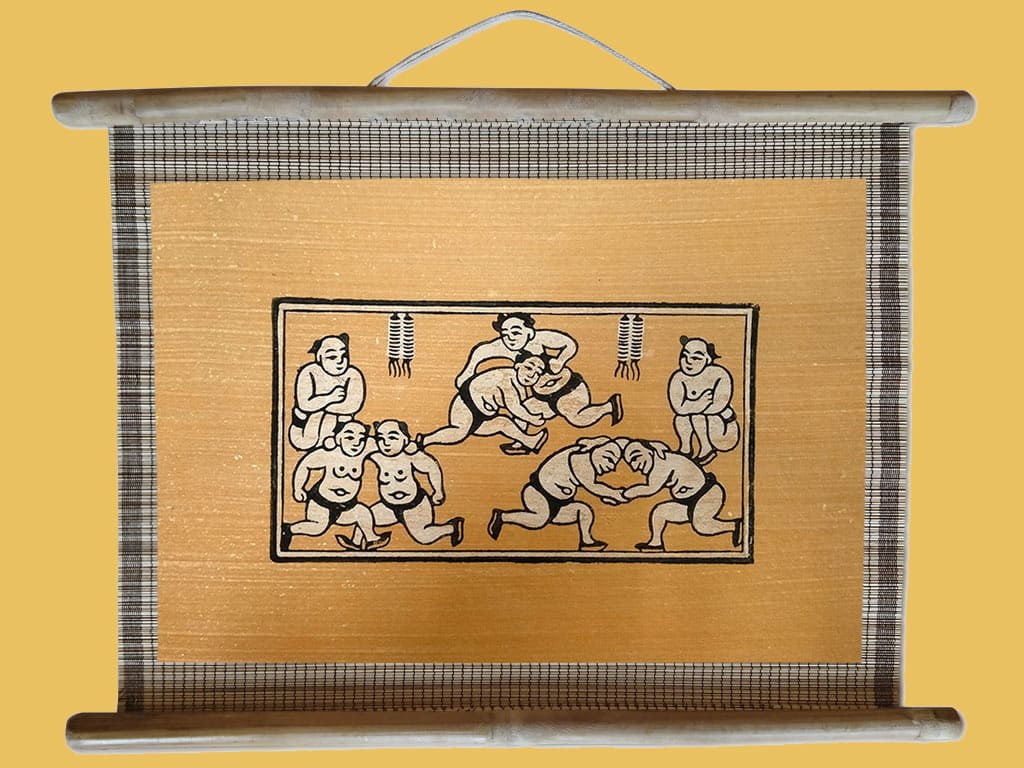
- Outstanding features: Simple motifs, free-flowing lines, often about labor, festivals or social activities such as folk paintings of jealousy.
- Cultural value: Recognized by UNESCO as an intangible cultural heritage, Dong Ho paintings help preserve national identity, from Lunar New Year to festivals.
Among hundreds of Dong Ho paintings, folk paintings of jealousy stand out thanks to their deep satire, making viewers laugh and think about family happiness.
The Origin of Folk Paintings of Jealousy: From Dong Ho Village to a Symbol of Social Criticism
The origin of the folk painting of jealousy is closely linked to the history of Dong Ho village from the 17th-18th century, when the art of woodblock printing flourished. This painting was created in the context of feudal society, where polygamy was common, leading to family tragedies.
How Did the Folk Painting of Jealousy Come About? Historical Context and Cultural Influence
According to historical documents, folk paintings of jealousy were created by Dong Ho artisans such as Nguyen Dang Che or Nguyen The Thuc. They were inspired by real life, where women had to endure injustice from their husbands and “third parties”.
- 17th century: The period when Dong Ho paintings exploded, with the theme of social activities. Folk paintings of jealousy appeared as a gentle but profound satire.
- Influenced by folklore: Based on folk stories about jealousy, the paintings combined humorous elements to avoid direct criticism, in line with East Asian culture.
- Development through the periods: By the 20th century, the paintings were widely printed, becoming Tet gifts, reminding about marital ethics.
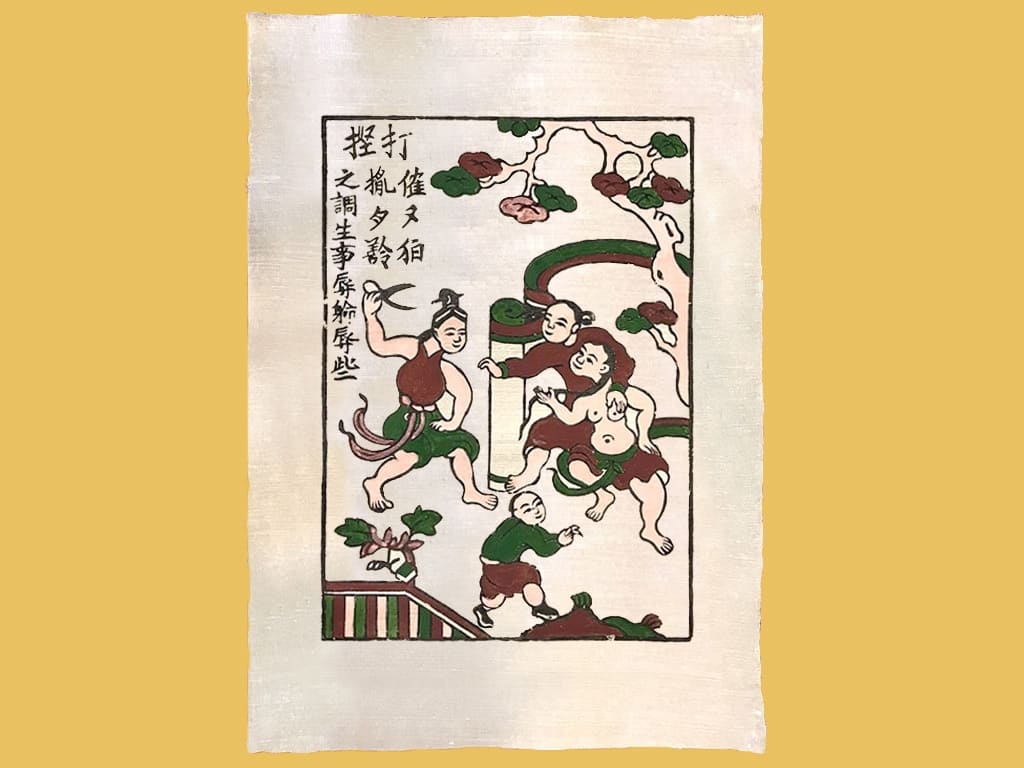
Today, the origin of folk paintings of jealousy is still being researched at the Vietnam Museum of Ethnology, proving the enduring vitality of folk art.
The Role of Dong Ho Artisans in Creating the Folk Painting of Jealousy
Dong Ho artisans not only paint but also carve wood to print paintings in bulk. The process of making folk paintings of jealousy includes:
- Preparing materials: Do paper from Do trees, natural colors from nature to keep it durable for hundreds of years.
- Wood carving: One color per copy, requiring sophisticated techniques to create vivid drawings.
- Printing and finishing: Printing layers of color, creating depth for the humorous image of jealousy.
Therefore, folk paintings of jealousy are not only art but also handicrafts, contributing to the economy of craft villages.
Composition of the Folk Painting “Jealousy”: Detailed Analysis of Characters and Artistic Elements
The composition of the folk painting of jealousy is arranged in a rectangular frame, creating a sense of balance and drama. The painting focuses on the four main characters, depicting a climactic but humorous scene of jealousy.
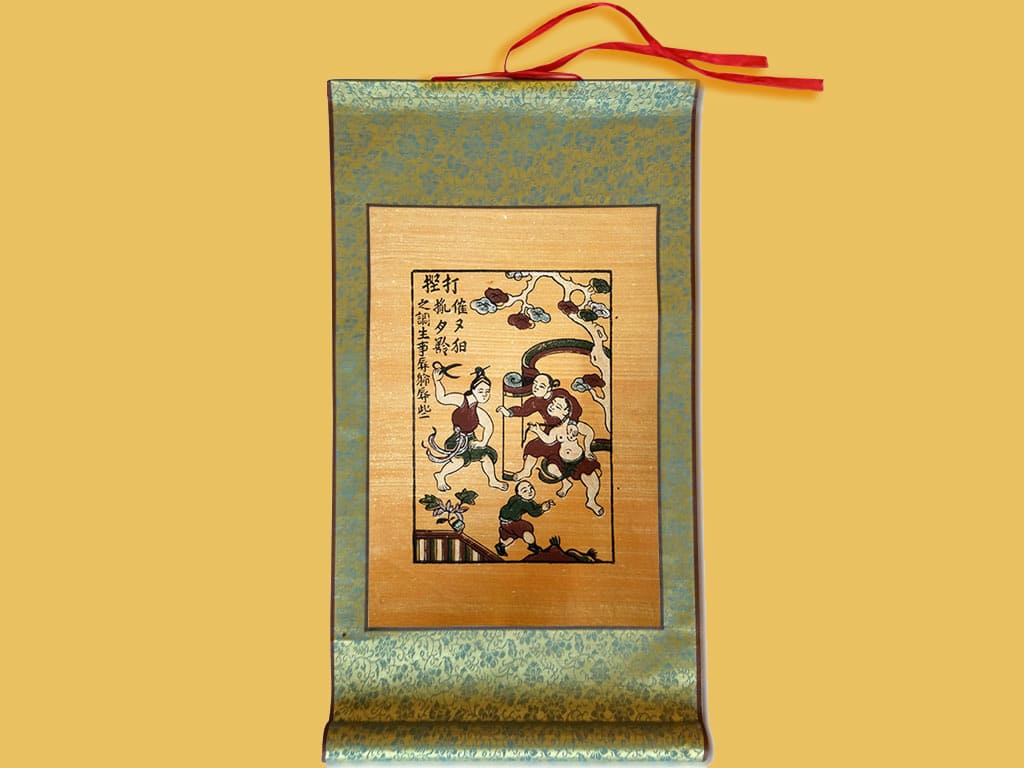
What’s Special About the Composition of the Folk Painting of Jealousy? The Characters and Symbolic Meanings
In the composition of the folk painting of jealousy, the characters are placed in the center, creating a vicious circle with no way out:
- The first wife: Rolled up her skirt, hands on hips, holding scissors to cut the hair of the “third person”. The image symbolizes anger and protection of the family, with her hair tied up showing readiness to fight.
- The third person (concubine): Dressed sloppily, turned her back to her husband, holding the first wife’s hair. The arrogant drawing criticizes the disregard for morality.
- The husband: Standing in the middle, his hand on the concubine’s chest but with a hesitant expression, showing cowardice and indecision in marriage.
- The child: Bowed his head, folded his arms to advise his mother to calm down, representing the younger generation suffering the consequences of family tragedy.
This composition creates a climax, making the viewer unable to look away, while emphasizing the social message through the rustic drawing.
Artistic Techniques in Composing Folk Paintings of Jealousy
The artist uses bright colors to highlight the composition:
- Red and black: Emphasize tension, symbolizing the fire of jealousy.
- Background motifs: Trees, simple houses, creating a Vietnamese countryside scene.
- Geometric balance: Horizontal rectangles make the painting easy to hang on the wall, giving a sense of stability.
Compared to other folk paintings such as “Hung Dua” or “Ngo Quyen”, the composition of the folk painting of jealousy is unique in its dramatic nature, combining humor and criticism.
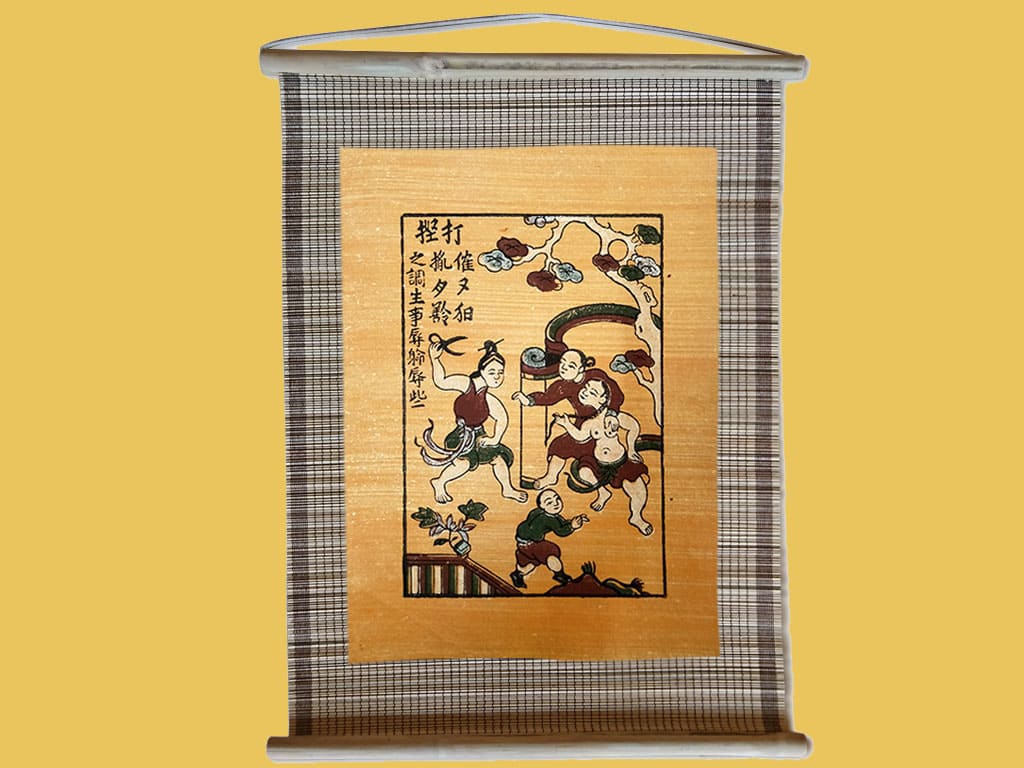
The Meaning of Folk Paintings of Jealousy – Criticism of Society and Moral Lessons
The meaning of the folk painting of jealousy transcends time, criticizing polygamy and calling for fidelity in marriage. Although created centuries ago, the painting still reflects the reality of modern society.
What is the Meaning of the Folk Painting of Jealousy? Critical and Educational Message
The meaning of the folk painting of jealousy focuses on three main aspects:
- Criticism of polygamy: Condemning the unfaithful husband, causing disruption to family happiness and tragedy for children.
- Criticism of the devaluation of women: Both the first wife and the concubine are degraded, reminding women to improve their self-worth.
- A warning for the “third person”: Criticizing the act of interfering, causing bad reputation and long-term consequences.
The painting is like a reminder: “Cherish family happiness to avoid mistakes”.
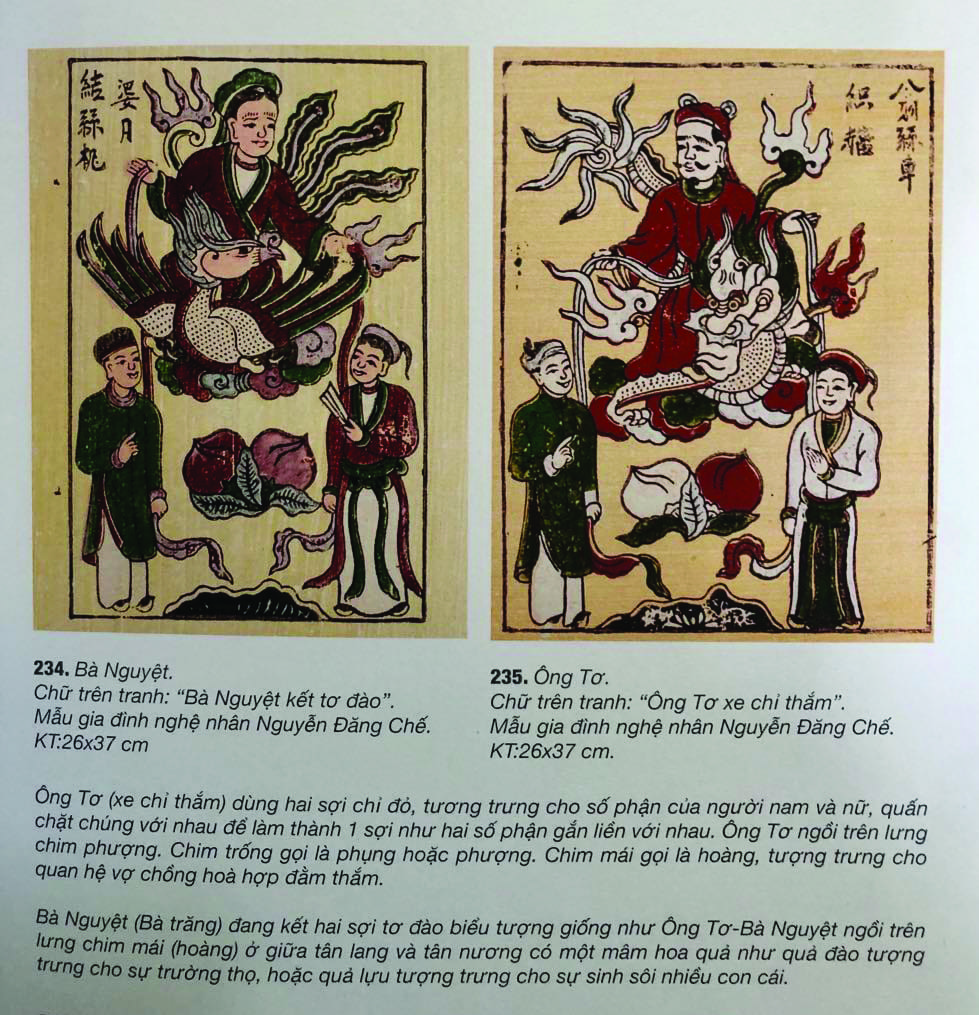
Meaningful Applications of Folk Paintings of Jealousy in Modern Life
In today’s society, the meaning of folk paintings of jealousy is still applicable:
- For women: Control emotions, solve problems calmly to protect children.
- For men: Distinguish between “love” and “loyalty”, be faithful to preserve the family.
- For society: Promote gender equality, reduce the tragedy of jealousy through education.
Many families hang folk paintings of jealousy as a reminder, combined with feng shui to bring positive energy.
How to Hang and Preserve Folk Paintings of Jealousy
Folk paintings of jealousy are not only for viewing but also for hanging on the wall, carrying feng shui meaning. Common sizes range from 26x37cm to 80x60cm, suitable for living rooms.
Advice on Hanging Folk Paintings of Jealousy According to Feng Shui
- Ideal location: Living room or office, facing East to increase positive energy.
- Integrated with interior: Hang glass frames or stick blinds to protect, avoid direct sunlight.
- Feng Shui meaning: The painting reminds of loyalty, helps the family to be warm.
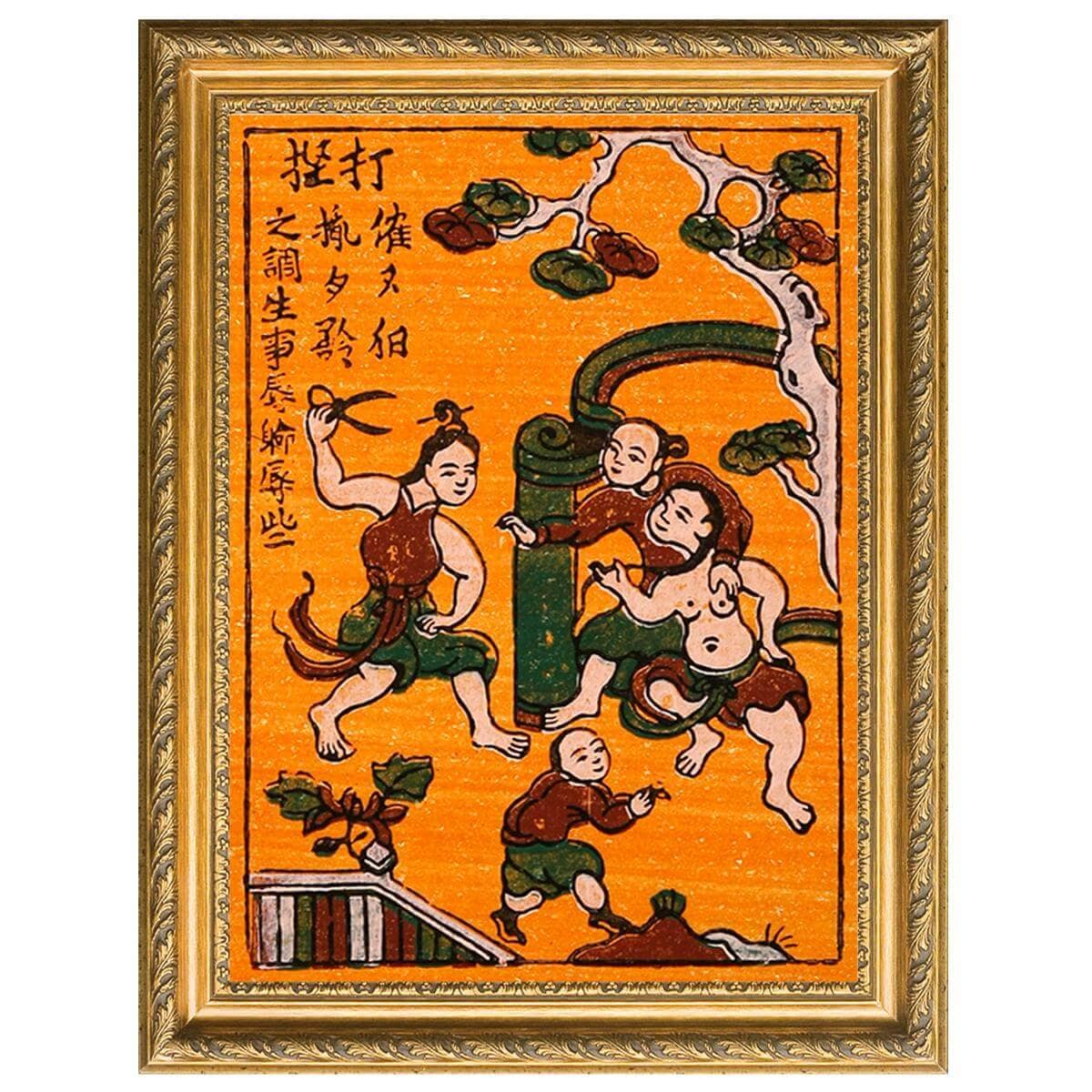
Secret to Preserving Folk Paintings of Jealousy for a Long Time
To keep the painting’s color fresh:
- Avoid mold: Store in a dry place, use absorbent paper.
- Gently clean: Wipe dust with a soft cloth, avoid chemicals.
- Storage: Roll in a paper tube if not hanging.
If you buy folk paintings of jealousy from Dong Ho village, choose handmade products to support the artisans.
The Legacy of Folk Paintings of Jealousy: From Art to Modern Cultural Icon
The folk painting of jealousy is a testament to the vitality of Vietnamese folk art. Today, it appears in exhibitions, textbooks and even movies, conveying messages about social ethics.
If you are passionate about art, visit Dong Ho village to experience the process of making folk paintings of jealousy. Or share: Which meaning of folk paintings of jealousy makes you think the most?

